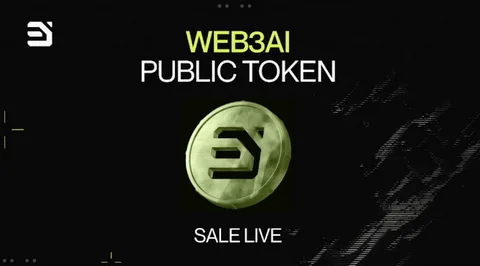As the cryptocurrency market continues to evolve, altcoins are gaining increasing attention from investors, developers, and financial analysts. While Bitcoin remains the most dominant cryptocurrency, altcoins – alternative cryptocurrencies to Bitcoin – are carving out their own space, offering unique features and use cases that are different from Bitcoin’s original purpose as a decentralized digital currency.
In recent years, the rising adoption of altcoins has led many analysts to predict a bright and successful future for these digital assets. Their optimistic outlook is based on a range of factors, from technological advancements to growing interest in decentralized finance (DeFi) and the increasing focus on blockchain interoperability.
In this blog post, we will explore why analysts believe that altcoins are poised for a successful future and discuss the key trends to watch in this space. By examining the data and analyzing current market trends, we’ll understand what drives this growing optimism.

The Rise of Altcoins: A Brief Overview
Altcoins refer to all cryptocurrencies that are not Bitcoin. This includes major players like Ethereum, Binance Coin, Solana, and newer coins such as Avalanche, Polkadot, and Cardano. Altcoins differ from Bitcoin in terms of functionality, consensus mechanisms, and use cases. For example, Ethereum is widely known for enabling decentralized applications (dApps) and smart contracts, while Binance Coin is the native cryptocurrency of the Binance exchange and is used to pay transaction fees.
In the past decade, the cryptocurrency market has expanded significantly, with altcoins capturing a growing share of the overall market capitalization. At the time of writing, altcoins collectively represent around 40% of the total crypto market. This figure continues to rise as more investors and institutions turn their attention to projects beyond Bitcoin, indicating that the future of altcoins could be just as bright as, if not brighter than, Bitcoin’s.
So why are analysts so bullish about altcoins? Let’s delve into some of the key trends driving this optimism.
Key Trends Driving Altcoin Success
1. DeFi and the Rise of Decentralized Applications
One of the biggest trends propelling altcoins toward a successful future is the explosive growth of decentralized finance (DeFi). DeFi refers to financial services built on blockchain technology that eliminate the need for intermediaries like banks, allowing users to lend, borrow, trade, and invest directly through decentralized applications (dApps).
The majority of DeFi applications run on the Ethereum blockchain, but newer altcoins like Solana, Avalanche, and Polygon are also making significant strides in the space. As DeFi continues to expand, so does the demand for altcoins that power these platforms.
Analysts believe that the DeFi ecosystem has only scratched the surface of its potential, and as more users adopt these decentralized financial services, the value of altcoins will increase. As the infrastructure around DeFi grows, it is likely that a range of altcoins will play an increasingly important role in the broader financial system, further driving their future success.
2. Blockchain Interoperability and Cross-Chain Solutions
Another key trend that analysts are closely watching is the rise of blockchain interoperability. Blockchain technology, in its current form, often exists in silos. Bitcoin operates on its own network, Ethereum has its ecosystem, and many other altcoins exist independently from one another.
However, cross-chain solutions and interoperability are rapidly gaining traction. Projects like Polkadot and Cosmos are working on creating an ecosystem where different blockchains can communicate and exchange value seamlessly. These interoperability solutions are expected to break down barriers between blockchains and foster greater collaboration and integration between different networks.
Analysts believe that blockchain interoperability is crucial for the long-term success of altcoins. As more users and applications move between chains, the demand for interoperable altcoins will rise. This key trend could enable altcoins to play a more central role in the future of blockchain technology, further boosting their chances for a successful future.
3. Institutional Adoption and Growing Interest from Traditional Finance
One of the most important drivers of altcoin success is the increasing interest from institutional investors. In the early days of cryptocurrency, altcoins were seen as speculative assets with little real-world utility. However, this perception has shifted as more institutions and traditional financial players begin to take altcoins seriously.
For example, Ethereum’s smart contract functionality has captured the attention of institutional investors who see the potential for decentralized applications to revolutionize industries like supply chain management, real estate, and insurance. Similarly, Solana and Avalanche have attracted investment from major venture capital firms due to their high-speed transaction capabilities and low fees.
As institutional interest grows, so does the legitimacy of altcoins. Analysts believe that as more financial institutions adopt altcoins for various use cases, their value and importance in the broader financial system will increase, paving the way for a successful future.
4. NFTs and the Expanding Use Cases of Altcoins
Non-fungible tokens (NFTs) have taken the world by storm in recent years, offering new ways for creators to monetize digital art, music, and other unique assets. The majority of NFT projects are built on altcoin platforms like Ethereum, Solana, and Binance Smart Chain, giving these cryptocurrencies significant utility beyond their function as digital money.
As the NFT market continues to grow, so does the demand for the altcoins that power these ecosystems. Analysts believe that the growing popularity of NFTs will further enhance the future success of altcoins, as more creators and users rely on these platforms to tokenize and trade digital assets.
Beyond NFTs, altcoins are also being used for other innovative applications, including decentralized autonomous organizations (DAOs), gaming, and metaverse projects. These expanding use cases are driving the demand for altcoins and positioning them as critical components of the digital economy.
The Road Ahead: What Does the Future Hold for Altcoins?
The future of altcoins looks bright, according to many analysts. Several factors, including technological innovation, increasing adoption of blockchain technology, and expanding use cases, are all contributing to a growing sense of optimism. However, as with any emerging market, there are risks involved, including regulatory challenges, market volatility, and technological hurdles.
Despite these risks, analysts believe that the long-term potential for altcoins remains strong. As more people, businesses, and institutions begin to recognize the value of altcoins and the ecosystems they power, we can expect to see continued growth and innovation in the altcoin space.
In conclusion, the future success of altcoins will be driven by key trends such as the rise of DeFi, blockchain interoperability, institutional adoption, and the expanding use cases of NFTs and other applications. These factors, combined with the growing legitimacy of the cryptocurrency market, are why analysts believe that altcoins are set for a successful future.
What do you think about the future of altcoins? Are you optimistic about their potential, or do you see challenges ahead? Share your thoughts in the comments below!






